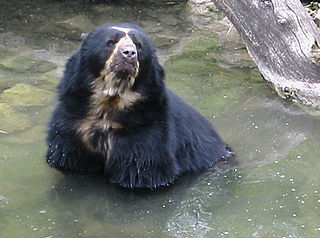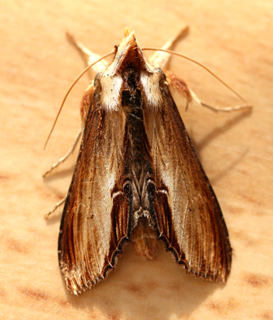Related Research Articles
A genus is a taxonomic rank used in the biological classification of living and fossil organisms, as well as viruses, in biology. In the hierarchy of biological classification, genus comes above species and below family. In binomial nomenclature, the genus name forms the first part of the binomial species name for each species within the genus.
Amerika Samoa is the territorial anthem of American Samoa. Composed by Napoleon Andrew Tuiteleleapaga and written by Mariota Tiumalu Tuiasosopo, it was officially adopted in 1950.
Omia may refer to:

Rodríguez de Mendoza is a province of the Amazonas Region, Peru. It is located in the southeast part of the department of Amazonas. It borders on the west with the province of Chachapoyas and on the north, east and south with the department of San Martin. It was created by law 7626 on October 31, 1932 and its capital is Mendoza.
Omia is a district of the province of Rodríguez de Mendoza in Peru.
Online Mendelian Inheritance in Animals (OMIA) is an online database of genes, inherited disorders and traits in more than 135 animal species. It is modelled on, and is complementary to, Online Mendelian Inheritance in Man (OMIM). It aims to provide a publicly accessible catalogue of all animal phenes, excluding those in human and mouse, for which species specific resources are already available. Authored by Professor Frank Nicholas of the University of Sydney, with some contribution from colleagues, the database contains textual information and references as well as links to relevant PubMed and Gene records at the NCBI.
A phene is an individual genetically determined characteristic or trait which can be possessed by an organism, such as eye colour, height, behavior, tooth shape or any other observable characteristic.

Synodontis is the largest genus of mochokid catfishes. It is the biggest genus within the 10 genera and 190 different species in the family Mochokidae. Synodontis has over 131 different species within the genera. Synodontis are also known as squeakers, due to their ability to make stridulatory sounds through their pectoral fin spines when handled or disturbed. Synodontis make a sound that sounds like squeaking by rubbing their spines together. They do this when they have been frightened or when they become angry. "Synodontis" may also squeak when they are taken out of the water. These catfish are small- to medium-sized fish with many species exhibiting attractive spotted markings. Some species are also known for naturally swimming belly-up, earning the name upside-down catfish. Some of these species are Synodontis contractus and Synodontis nigriventris. While some of these species are known to swim upside down, another species, Synodontis multipunctatus, is a brood parasitic cuckoo catfish.

Monochamus is a genus of longhorn beetles found throughout the world. They are commonly known as sawyer beetles or sawyers, as their larvae bore into dead or dying trees, especially conifers such as pines. They are the type genus of the Monochamini, a tribe in the huge long-horned beetle subfamily Lamiinae, but typically included in the Lamiini today.

Cuculliinae is one of the larger subfamilies of moths in the family Noctuidae.

Synodontis omias is a species of upside-down catfish native to the Niger River basin of Guinea, Mali, Niger and Nigeria. It was first described by German-born British zoologist, ichthyologist, and herpetologist Albert Günther in 1864, from a specimen collected in Jebba, Nigeria, on the Niger River. There have been very few specimens of this species identified, and it may be the same species as S. budgetti from the Upper Niger.
Crassiclava omia is a species of sea snail, a marine gastropod mollusk in the family Pseudomelatomidae.
Crassiclava is a genus of sea snails, marine gastropod mollusks in the family Pseudomelatomidae.
Congenital contractural arachnodactyly (CA), also known as fawn calf syndrome, is an autosomal recessive genetic disorder in cattle. The disorder affects the connective tissue of muscles, leading to contracture of the upper limb, and laxity of the joints of the lower limbs. CA affects Angus cattle, and associated breeds such as Murray Greys. The mutation which causes this defect is a deletion on bovine chromosome 21.
Omiini is a weevil tribe in the subfamily Entiminae.
Monochamus omias is a species of beetle in the family Cerambycidae. It was described by Jordan in 1903.
Pallavolo Cisterna 88 is an Italian women's volleyball club based in Cisterna di Latina and currently playing in the Serie C.
Omias saccatus, the sagebrush weevil, is a species of broad-nosed weevil in the beetle family Curculionidae. It is found in North America.
Omias is a genus of broad-nosed weevils in the family of beetles known as Curculionidae. There are at least 50 described species in Omias.

Arja Sinikka Juvonen is a Finnish politician, representing the Finns Party in the Parliament of Finland. She has served in the Parliament since 2011 and in the City Council of Espoo since 2009.
References
| This Cuculliinae article is a stub. You can help Wikipedia by expanding it. |